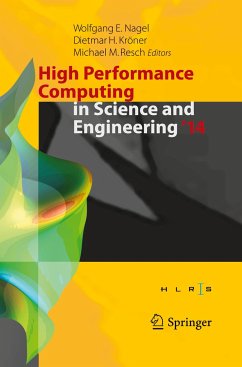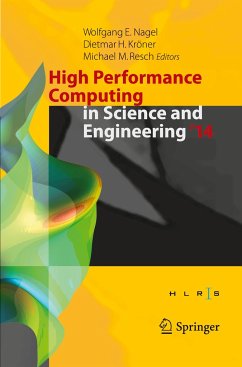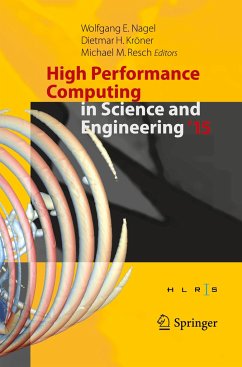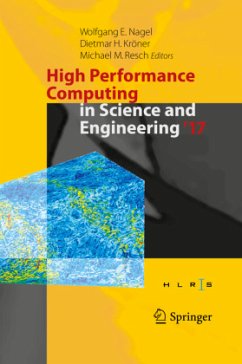
High Performance Computing in Science and Engineering '03
Transactions of the High Performance Computing Center Stuttgart (HLRS) 2003
Herausgegeben: Krause, Egon; Jäger, Willi

PAYBACK Punkte
19 °P sammeln!
Prof. Dr. Egon Krause Aerodynamisches Institut RWTH Aachen Wullnerstr. zw. 5 u. 7, D-52062 Aachen Prof. Dr. Willi Jager Interdisziplinares Zentrum fur Wissenschaftliches Rechnen Universitat Heidelberg 1m Neuenheimer Feld 368, D-69120 Heidelberg Prof. Dr. Michael Resch Hi::ichstleistungsrechenzentrum Stuttgart Allmandring 30, D-70550 Stuttgart The High-Performance Computing Center Stuttgart (HLRS) underwent dra matic changes during the last year. At the beginning of 2003 the Center was separated from the Computing Center of Stuttgart University and turned into an independent central unit of Stu...
Prof. Dr. Egon Krause Aerodynamisches Institut RWTH Aachen Wullnerstr. zw. 5 u. 7, D-52062 Aachen Prof. Dr. Willi Jager Interdisziplinares Zentrum fur Wissenschaftliches Rechnen Universitat Heidelberg 1m Neuenheimer Feld 368, D-69120 Heidelberg Prof. Dr. Michael Resch Hi::ichstleistungsrechenzentrum Stuttgart Allmandring 30, D-70550 Stuttgart The High-Performance Computing Center Stuttgart (HLRS) underwent dra matic changes during the last year. At the beginning of 2003 the Center was separated from the Computing Center of Stuttgart University and turned into an independent central unit of Stuttgart University. Last March the Land Baden-Wurttemberg shaped up her strategy of cooperation and formed of a new Center of Competence in High-Performance Computing in Baden Wurttemberg by aS80ciating HLR Stuttgart with the SSC Karlsruhe. At the present time the HLRS is preparing its decision for a new computer system to be planned to be operative in 2005. A safe decision is difficult to arrive at since the offers of the vendors of high-performance computers are continuously and rather rapidly changing. At the lower end the microprocessor based systems are attacked by clusters ofPCs. The superior price-performance VI Preface ratio makes such rather inexpensive systems attractive for a variety of appli cations, most of which are latency bound. At the upper end microprocessor based systems are pressured by vector-based systems. The latter have seen a revival nourishing on the success and political impact of the earth simulator project.














